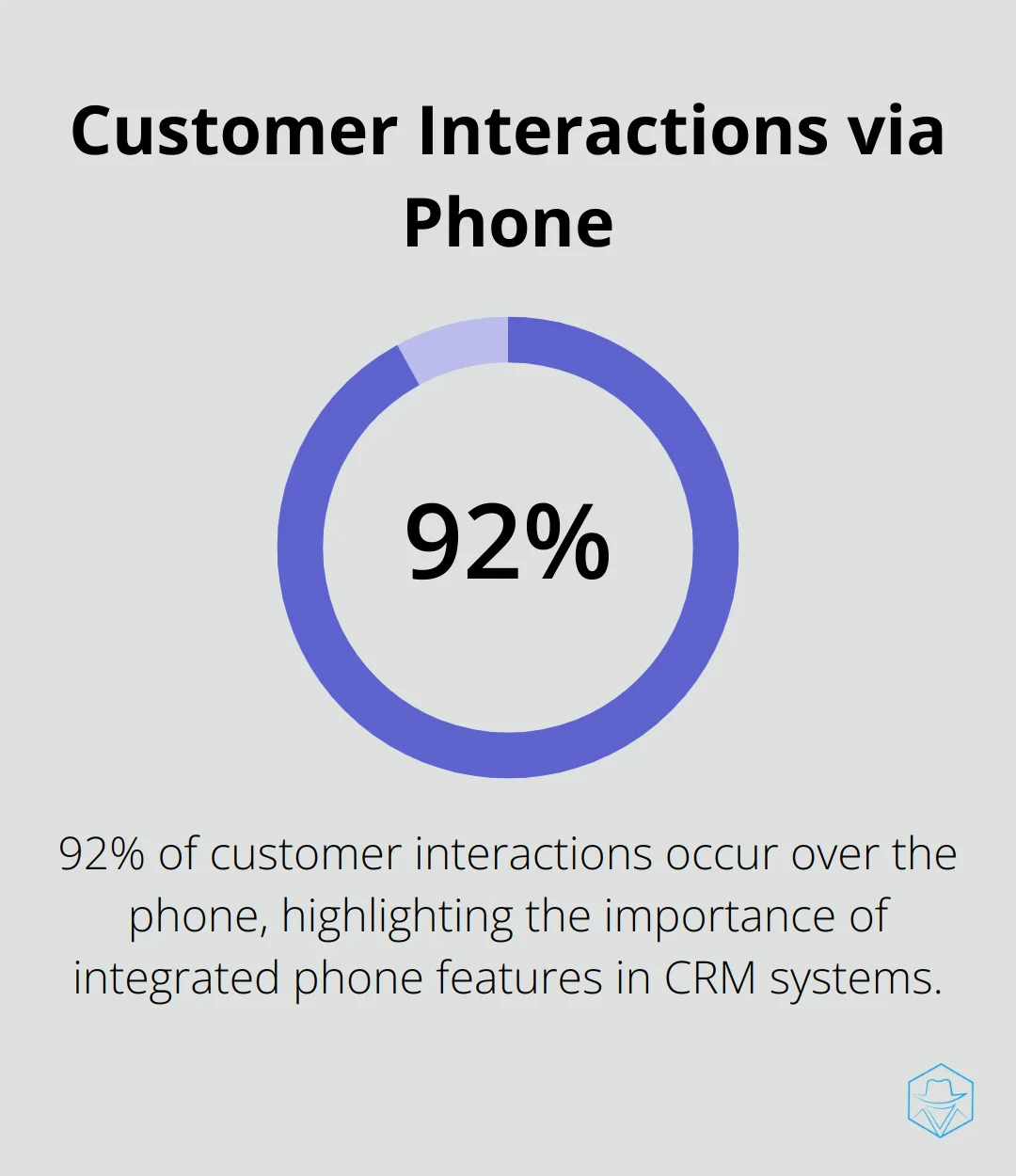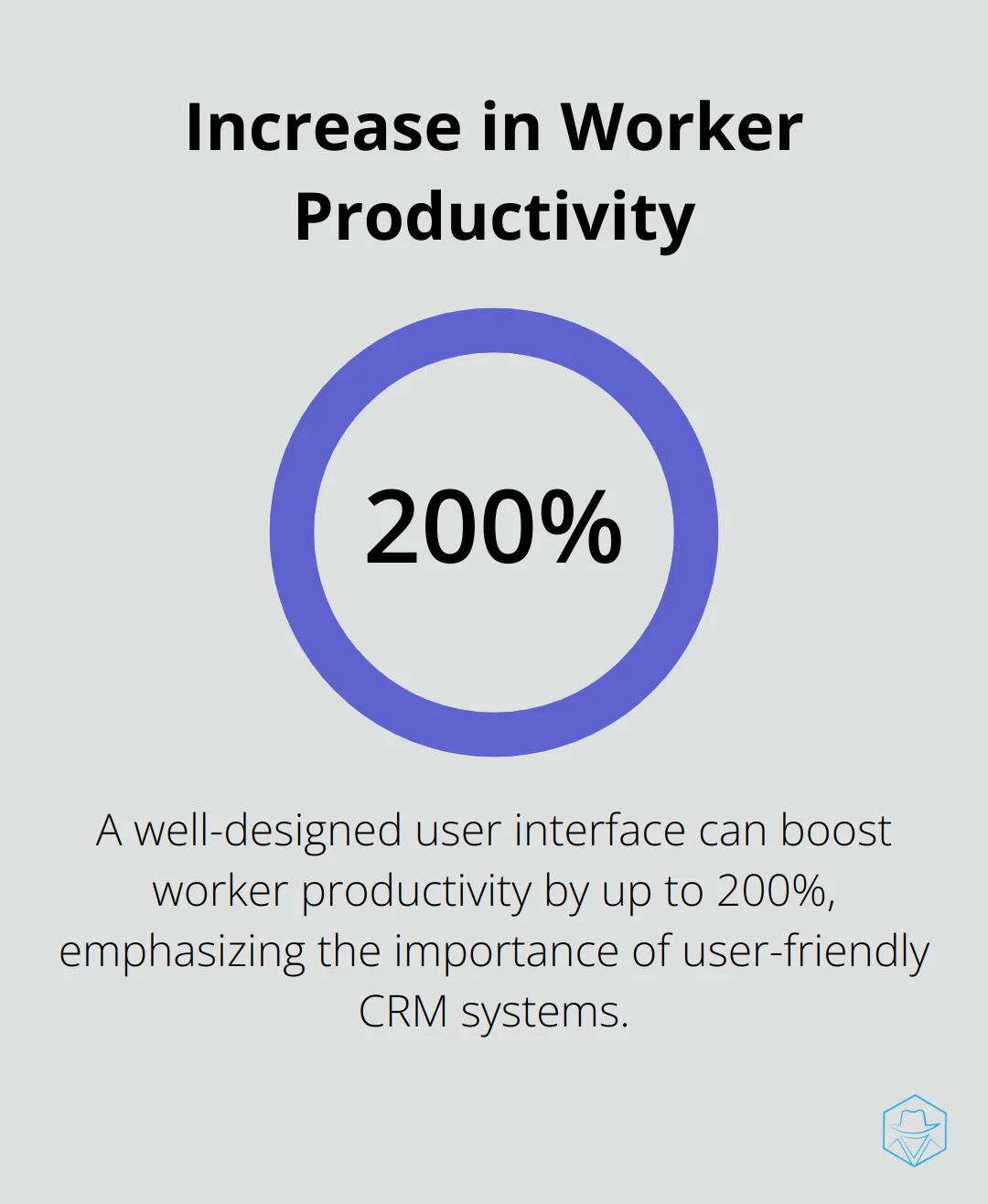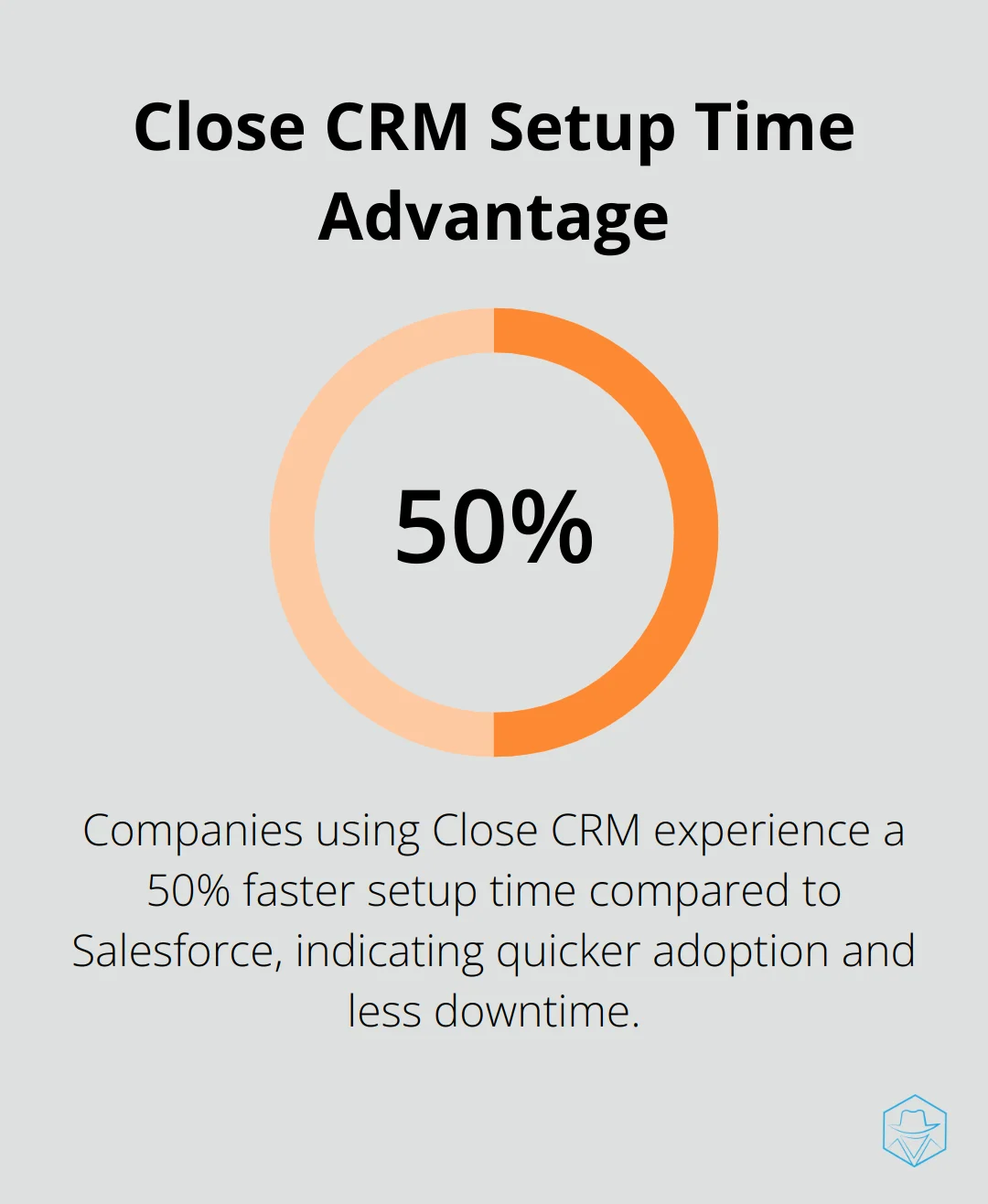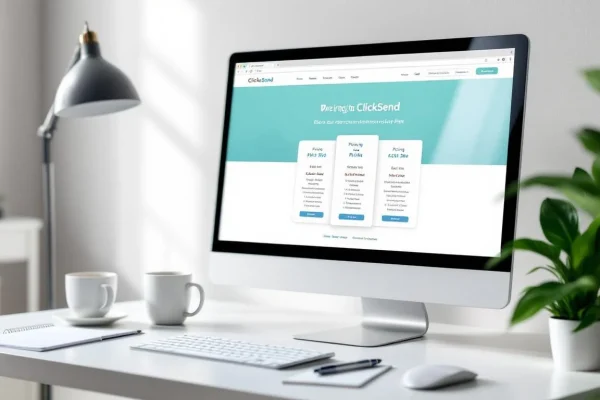Close CRM: Is It the Best Option for Your Sales Team?

At Drop Cowboy, we’re always on the lookout for tools that can boost sales performance. Close CRM has been making waves in the industry, prompting many to seek out Close CRM reviews.
In this post, we’ll examine Close CRM’s key features, weigh its pros and cons, and compare it to popular competitors. Our goal? To help you decide if Close CRM is the right fit for your sales team.
What Makes Close CRM Stand Out?
Close CRM offers a suite of features that streamline sales processes and enhance team productivity. The platform’s core strength lies in its integrated approach to communication and task management.
Integrated Communication Hub
Close CRM combines email and phone communication directly within the platform. This integration allows sales reps to make calls, send emails, and track all interactions without switching between multiple tools. Salesforce reports that 92% of customer interactions occur over the phone, underscoring the importance of this feature. With Close, sales teams can make calls directly from the CRM, record conversations, and automatically log them for future reference (saving time and preserving valuable information).

Powerful Automation
The automated follow-ups and task management features in Close CRM revolutionize sales team operations. Users can set up sequences of emails and tasks, ensuring consistent follow-up without manual intervention. This automation proves invaluable, considering that Telenet and Ovation Sales Group found it typically takes eight follow-up calls to reach a prospect.
Visual Pipeline Management
Close CRM’s customizable sales pipeline provides teams with a clear view of their deals at every stage. The drag-and-drop interface for opportunities between stages simplifies the process of updating and managing the sales pipeline. This visual approach helps identify bottlenecks and forecast revenue more accurately.
Data-Driven Insights
The platform’s advanced reporting and analytics capabilities round out its feature set. Close CRM offers detailed insights into sales activities, pipeline health, and individual performance. These analytics prove crucial for making informed decisions. Salesforce reports that sales organizations leveraging such tools see a 20% increase in individual rep performance.
While Close CRM offers robust features, it’s worth noting that other platforms can complement these capabilities, especially in terms of outreach. Additional channels for effective customer engagement (like ringless voicemail and SMS) can significantly enhance the communication strategies of sales teams using Close CRM. For businesses looking to further streamline their processes, exploring marketing automation tools can be beneficial in conjunction with their CRM system.
Is Close CRM Right for Your Team?
Close CRM offers a range of features that can enhance your sales process, but it’s important to consider both its strengths and limitations before making a decision. Let’s explore the key aspects that make Close CRM stand out, as well as areas where it might fall short for some teams.
User-Friendly Interface Boosts Productivity
Close CRM’s intuitive interface stands out as one of its best features. Sales teams can start using it quickly, with minimal training required. This ease of use directly increases productivity. A study by Forrester Research shows that a well-designed user interface can increase worker productivity by up to 200%. For sales teams, this means more time spent on actual selling rather than navigating complex software.

All-in-One Solution Streamlines Workflows
Close CRM’s integrated approach to sales management provides a significant advantage. It combines email, phone, and task management in one platform, which eliminates the need for multiple tools. This consolidation leads to substantial time savings. A report by McKinsey found that employees spend 19% of their time searching for and gathering information. Close CRM’s all-in-one solution redirects this time towards more productive sales activities.
Powerful Search Functionality Enhances Efficiency
Close CRM’s robust search capabilities set it apart from many competitors. Sales reps can quickly find the information they need (whether it’s a specific email, call log, or customer detail). This feature proves particularly valuable considering that sales reps spend an average of 440 hours per year searching for the right information to do their jobs effectively, according to IDC research.
Limited Integrations May Pose Challenges
Despite its strengths, Close CRM has some limitations. The platform’s integration options are somewhat limited compared to some larger CRM systems. This could create problems for businesses with complex tech stacks that require extensive third-party integrations.
Pricing Structure and Customization Constraints
The pricing structure of Close CRM might not suit all businesses, particularly smaller teams or startups with tight budgets. While the platform offers various tiers, some users report that scaling up can become costly quickly.
Moreover, some users find the customization options in Close CRM to be somewhat restrictive. For businesses with unique sales processes or reporting needs, this lack of flexibility could become a significant drawback.
While Close CRM offers solid features for sales teams, businesses looking for more comprehensive communication solutions might want to consider platforms like Drop Cowboy. Drop Cowboy provides advanced features such as ringless voicemail and SMS integration, which can complement CRM functionalities and further enhance customer engagement strategies. Now, let’s compare Close CRM to some of its major competitors to give you a clearer picture of where it stands in the market.
How Does Close CRM Stack Up Against Competitors?
Close CRM offers a unique set of features that set it apart from other popular CRM options in the market. We’ll compare Close CRM to Salesforce, HubSpot CRM, and Pipedrive to help you understand its strengths and weaknesses.
Close CRM vs. Salesforce: Streamlined Experience vs. Extensive Customization
Salesforce stands as the industry giant, but Close CRM provides a more streamlined experience for small to medium-sized businesses. Salesforce offers extensive customization options and a vast ecosystem of third-party integrations, which can become overwhelming and require significant time to set up and maintain.
Close CRM, in contrast, offers a user-friendly interface and faster implementation. A Forrester Research study reported that companies using Close CRM experienced a 50% faster setup time compared to Salesforce. This translates to quicker adoption and less downtime for sales teams.

However, Salesforce excels in handling complex sales processes and provides more advanced analytics capabilities. For businesses that require intricate workflows and extensive reporting, Salesforce might be the better choice. Teams seeking a straightforward, easy-to-use CRM with powerful built-in communication tools will find Close CRM more suitable.
Close CRM vs. HubSpot CRM: Sales Focus vs. Marketing Integration
HubSpot CRM is known for its free tier and integration with HubSpot’s marketing tools. Both Close CRM and HubSpot CRM offer user-friendly interfaces, but they cater to different needs.
Close CRM excels in its focus on sales-specific features. Its built-in calling and email tracking capabilities surpass HubSpot’s free offering. A G2 survey found that sales teams using Close CRM reported a 35% increase in productivity compared to those using HubSpot CRM’s free version.
HubSpot CRM’s scalability and integration with HubSpot’s marketing suite make it a strong contender for businesses looking for an all-in-one inbound marketing and sales solution. If your primary focus is sales and you need powerful communication tools out of the box, Close CRM might be the better fit.
Close CRM vs. Pipedrive: Communication Tools vs. Visual Pipeline Management
Close CRM and Pipedrive are both designed with sales teams in mind, but they approach sales management differently. Pipedrive is known for its visual pipeline management, while Close CRM emphasizes communication tools and automation.
Close CRM’s integrated calling features give it an advantage for teams heavily reliant on phone sales. A Sales Hacker study revealed that sales reps using Close CRM spent 20% less time on data entry compared to those using Pipedrive (thanks to Close’s automatic call logging and email tracking).
Pipedrive offers a more intuitive pipeline visualization, which some teams find helpful for managing deals. It also tends to be more budget-friendly for smaller teams.
The choice between Close CRM and Pipedrive depends on your sales process. If your team relies heavily on phone and email communication, Close CRM’s integrated tools could significantly boost productivity. If visual pipeline management is your priority, Pipedrive might be the better option.
While these comparisons provide a general overview, the best CRM for your team depends on your specific needs and processes. Some businesses find that combining a CRM like Close with specialized tools for certain functions yields the best results. For instance, pairing Close CRM with Drop Cowboy’s ringless voicemail and SMS capabilities can create a powerful sales and communication ecosystem (especially for teams looking to expand their outreach channels beyond traditional methods).
Final Thoughts
Close CRM offers powerful tools for sales teams, particularly those focused on streamlined communication and efficient task management. Its user-friendly interface, integrated communication hub, and automation features can increase productivity and enhance sales processes for small to medium-sized businesses. However, Close CRM has limitations in integration options and customization capabilities, which may challenge businesses with complex tech stacks or unique sales processes.
Close CRM reviews highlight its excellence in providing a focused, sales-centric experience. The platform is well-suited for sales-driven organizations that prioritize phone and email communication. Teams that value a straightforward, all-in-one solution for managing customer interactions and sales pipelines will benefit from Close CRM’s robust search functionality and visual pipeline management.
For businesses seeking to expand their communication channels, integrating Close CRM with specialized tools can create a more comprehensive sales ecosystem. Drop Cowboy’s advanced communication features (such as ringless voicemail and SMS integration) complement Close CRM’s functionalities, allowing sales teams to engage customers through multiple channels effectively. The decision to adopt Close CRM should depend on your team’s specific needs, budget, and long-term growth plans.
blog-dropcowboy-com
Related posts

July 20, 2025
ClickSend Pricing: Is It Worth the Investment?
Explore ClickSend pricing and decide its value for your business. Weigh costs against benefits and find out if it’s the right fit.

March 12, 2025
How to Use Unlimited Ringless Voicemail for Business
Boost your business with unlimited ringless voicemail. Explore effective strategies and gain insights for optimizing your communication efforts today.

July 20, 2025
How to Implement NICE CCaaS for Improved Customer Service
Implement NICE CCaaS for seamless customer service, boosting satisfaction and efficiency with expert tips and strategies.

June 16, 2025
The Dual Channel Strategy: Benefits of SMS Marketing + Ringless Voicemail
Reaching people quickly matters more than ever. Attention spans are short, and timing is everything. According to the CTIA, Americans send and exchange 2 trillion text messages each year. This makes it one of the most effective engagement strategies. But what if you could combine the benefits of SMS marketing along with key ringless voicemail benefits into one dual-channel […]

May 19, 2025
Is Wholesale Real Estate Legit or a Scam?
Explore whether wholesale real estate is legit. We discuss its legality, benefits, risks, and how to spot scams in this comprehensive blog post.

September 3, 2025
Best Practices for Creating Compelling Voicemail Drops
Learn voicemail drop best practices to engage effectively, maximize reach, and enhance customer interactions with our straightforward tips and insights.